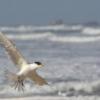-
Posts
9,502 -
Joined
-
Last visited
Content Type
Profiles
Forums
Gallery
Events
Everything posted by Jim Lad
-
Hello Ricky. Welcome home! John
-
Hello John, and another warm welcome to the forum from 'Down Under'. John
-
Hello, and a warm welcome to the forum. John
-
Hello Jim, and a warm welcome to the forum from 'Down Under'. John
-
Hello Jonathas, and a warm welcome to MSW from 'Down Under. John
-
Hello Ziggy, and another warm welcome from 'Down Under'. John
-
Got some time back in the museum at last and, in spite of having a lot of visitors stop to talk (school holidays here), I managed to get a bit done. The inside of the hull is looking fairly civilised now and the outside is at least starting to come together. Perhaps I'll actually finish the frame one day! John
-
Hello Raymond, and a warm welcome to the forum from 'Down Under'. John
-
Hello Robert, and another warm welcome to the forum from 'Down Under'. John
-
Looks good, Gary! The highly technical term for your sidelight blocking boxes (at least on British ships), is 'screens'. By the way, check your scale measurements just to make sure they're OK (they look it) - they should project at least three feet forward from the lights. As for the colour, it depends on what period you're modelling. The current trend is to paint sidelight screens black; they used to be red and green as per the colour of the lights. John
-
Thanks, Piet; I'm fine, but I haven't been able to get in to the museum for the past few weeks due to various things coming up on a Monday. I'm hoping to back in there tomorrow. John
-
Hello Harry, and another warm welcome from 'Downunder'. John
-
Not sure if it's the same ship, Gary, but a search of the shipping section of the newspapers of the day would certainly give you a good clue as these usually listed the name of the ship's Master. As the 'Meteor' I'm building was a Hamburg ship, the Master should have a German name. John
-
How have I missed this before? A really beautiful build, Kevin. John
- 337 replies
-
- finished
- mountfleet models
-
(and 1 more)
Tagged with:
-
Hello Tim, and a warm welcome to the forum from over is Sydney! John
-
Hello Calvin, and a warm welcome to the forum from 'Down Under'. John
About us
Modelshipworld - Advancing Ship Modeling through Research
SSL Secured
Your security is important for us so this Website is SSL-Secured
NRG Mailing Address
Nautical Research Guild
237 South Lincoln Street
Westmont IL, 60559-1917
Model Ship World ® and the MSW logo are Registered Trademarks, and belong to the Nautical Research Guild (United States Patent and Trademark Office: No. 6,929,264 & No. 6,929,274, registered Dec. 20, 2022)
Helpful Links
About the NRG
If you enjoy building ship models that are historically accurate as well as beautiful, then The Nautical Research Guild (NRG) is just right for you.
The Guild is a non-profit educational organization whose mission is to “Advance Ship Modeling Through Research”. We provide support to our members in their efforts to raise the quality of their model ships.
The Nautical Research Guild has published our world-renowned quarterly magazine, The Nautical Research Journal, since 1955. The pages of the Journal are full of articles by accomplished ship modelers who show you how they create those exquisite details on their models, and by maritime historians who show you the correct details to build. The Journal is available in both print and digital editions. Go to the NRG web site (www.thenrg.org) to download a complimentary digital copy of the Journal. The NRG also publishes plan sets, books and compilations of back issues of the Journal and the former Ships in Scale and Model Ship Builder magazines.



